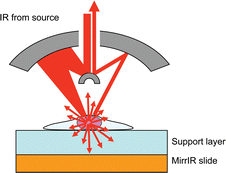Optical artefacts in transflection mode FTIR microspectroscopic images of single cells on a biological support: the effect of back-scattering into collection optics
Abstract
Infrared microspectroscopic imaging data of single human prostate cancer cells, on an artificial


 Please wait while we load your content...
Please wait while we load your content...